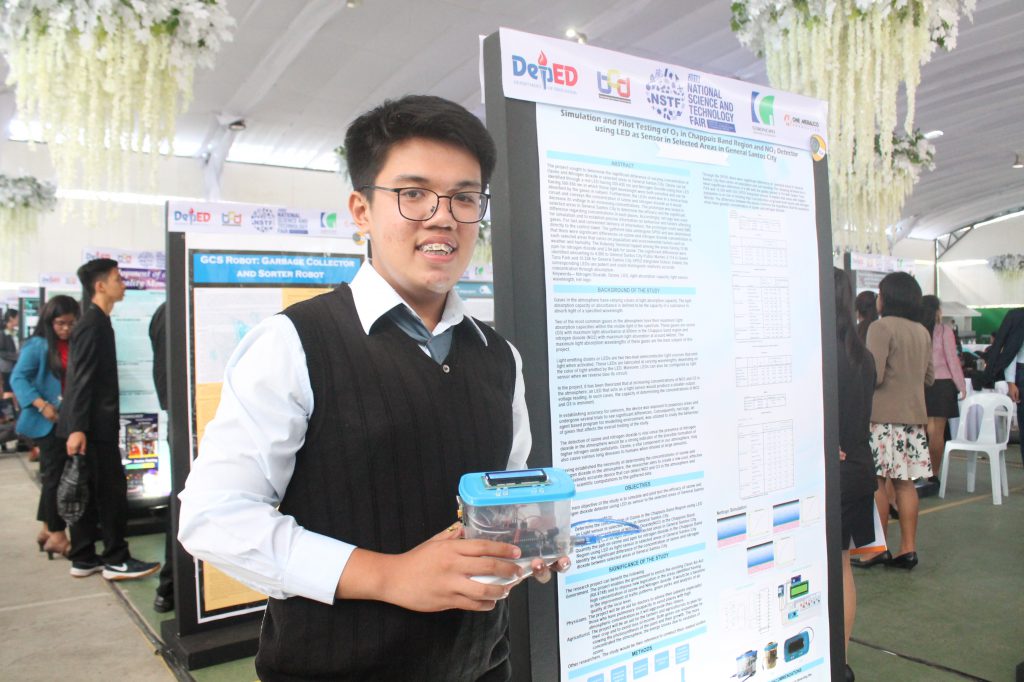Romel Angelo Picazo stood uneasy at his research booth, his eyes darted here and there in anticipation of a judge or a potential audience to explain his innovation to. But in the sea of equally nervous young innovators, he proved that there is more to his disquiet than meets the eye.
As a lone audience approached his booth, he readily launched a volley of jargons and equations that comprise his research. With precision in his words and accuracy in his details, a certain level of confidence was reached and his personal stake in the research was revealed.
While winning in the 2019 National Science Technology Fair (NSTF) is the inevitable goal of a participant, being able to give back to the community is the ultimate hope of every student-researcher. For the Grade 10 learner of General Santos City SPED Integrated School, it is his battle against pollution that has affected his health since age 10.
His research, “Simulation and Pilot-Testing of O3 in Chappuis Band Region and NO2 Detector using LED as Sensor in Selected Areas in General Santos City,” was developed out of his struggle against pneumonia. Using light-emitting diodes, or LED, as sensors, his prototype is able to identify the concentration of ozone and nitrogen dioxide in the Chappuis Band Region of the ozone layer. As his innovation is able to determine the difference in the concentration of the said gases in selected areas, Romel said he aims to push his research toward the detection of other pollutants in more places in the country.

“The detection of ozone and nitrogen dioxide is vital since the presence of the latter in the atmosphere would be a strong indicator of a possible formation of higher nitrogen oxide pollutants. Ozone, a vital component in our atmosphere, may also cause various lung diseases when inhaled in large volume,” the 16-year-old gifted and talented learner stated in his paper.
A first-time participant in the NSTF, Romel already set his project to help enhance Republic Act No. 8749, otherwise known as the Clean Air Act, by providing an analysis of air quality at the local level and a baseline on the improvement of traffic patterns and green initiatives.
“I have made some research on the air quality index in the Philippines, although we have air quality monitoring, it requires update and real-time access to the public. An existing system also costs our government more compared to this LED-sensor,” Romel shared.
As an aspiring doctor, he envisions that his innovation may also help physicians to readily advise their patients with pulmonary conditions to avoid places with high concentration of atmospheric pollutants. Aside from doctors, farmers may as well benefit from his low-cost prototype as it enables them to easily determine the concentration of the two gases, which slow down photosynthesis and affect crop development.
Although hindi natin nakikita at nararamdaman ang air quality, pero using a simple thing like LED na tingin natin impossible, napaka-importante nito sa atin and I would want to enable the ordinary Filipinos to do so even on their own,” Romel concluded.
END


